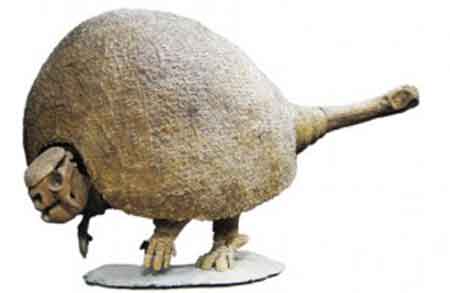Car-Sized Creature Whacked with Tail's Sweet Spot

When Alex Rodriguez swings for the fences or Venus Williams tries to ace her serve, they do well to connect at the “sweet spot” of their bat or racket. That aim was apparently shared by some unlikely contenders: glyptodonts, armored mammals with clublike tails that roamed the Americas until about 10,000 years ago.
The sweet spot, or center of percussion, is the point on a tool where powerful blows should be landed to maximize impact and minimize the risk of injury to the user.
For the largest glyptodonts, which could reach the size and weight of a compact car, dealing a blow at their tail’s sweet spot minimized risk to the joint at the base of the tail, while inflicting maximum damage on an opponent. So conclude R. Ernesto Blanco of the University of the Republic in Montevideo, Uruguay, and colleagues, who mathematically modeled the fossilized tails of several species of glyptodonts.
The largest glyptodont species, such as Doedicurus clavicaudatus, had elliptical depressions on their tails that many researchers think bore spikes—the most menacing of which, Blanco’s team found, would have sprouted close to the center of percussion.
Giant glyptodonts were probably limited to wielding their tails in clumsy, ritualized encounters with same-species rivals, the team says, whereas smaller, nimbler species had flexible tails they could have used to ward off predators and other unpredictable adversaries.
The research was detailed in the Proceedings of the Royal Society B.
- 25 Amazing Ancient Beasts
- Ancient Oversized Armadilo-Like Species Discovered
- Ancient Beast in Action
This article was provided to LiveScience by Natural History Magazine.
Get the world’s most fascinating discoveries delivered straight to your inbox.


